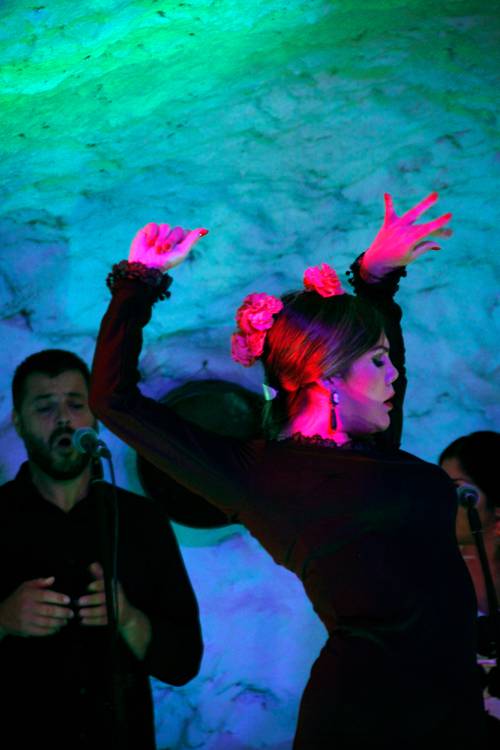
FAQ About The Role of Flamenco in Cultural Identity Formation

What is Flamenco?
Flamenco is a traditional art form that originated in the Andalusian region of Spain, comprising music, dance, and song. It is characterized by expressive and rhythmic elements, often reflecting the cultural exchanges among Moorish, Gypsy, and native Andalusian cultures.

How did Flamenco originate?
Flamenco originated in the Andalusian region of Spain during the late 18th century. It developed through a fusion of cultures, including the influences of the Roma people, who are credited with adding significant rhythm and depth to the music and dance.

In what ways does Flamenco contribute to cultural identity in Spain?
Flamenco serves as a symbol of cultural pride and heritage, especially in Andalusia. It reflects the mixed cultural influences that define the region's history and offers communities a means to express their unique identity. Practicing and performing Flamenco can reinforce communal bonds and a sense of belonging.

Does Flamenco play a role in modern Spanish society?
Yes, Flamenco remains a vibrant part of modern Spanish society. It is celebrated in festivals around the country, studied in specialized schools, and incorporated into contemporary music and dance forms. Flamenco continues to evolve, bridging traditional and modern expressions of cultural identity.

Who are some famous Flamenco artists?
Some renowned Flamenco artists include singers such as Camarón de la Isla and Enrique Morente, and dancers like Sara Baras and Joaquín Cortés. These artists have brought Flamenco to international stages and contributed significantly to its evolution.

How is Flamenco taught and learned today?
Flamenco is taught through a combination of formal education in music and dance schools and traditional mentoring. In Spain, there are dedicated conservatories and academies where students learn the technical and expressive aspects of Flamenco performance.

What role does Flamenco play in festivals in Spain?
Flamenco is a highlight of many cultural festivals across Spain, such as the Feria de Abril in Seville and the Bienal de Flamenco. These festivals showcase Flamenco performances, promote cultural exchange, and attract visitors from around the world, strengthening national and regional identities.

How have historical events influenced Flamenco?
Historical events, such as the migration of the Roma people and the Reconquista, have deeply influenced Flamenco. These events brought together diverse musical traditions that shaped Flamenco's distinctive rhythms and styles, reflecting the socio-political changes in Spain.

What instruments are commonly used in Flamenco music?
Common instruments in Flamenco music include the guitar, cajón (a type of percussion box), castanets, and handclaps. These instruments contribute to the complex rhythmical structure and rich sound of Flamenco performances.

What are the key elements of a Flamenco performance?
A Flamenco performance typically includes singing (cante), guitar playing (toque), and dance (baile). Each element is characterized by intense emotional expression and technical skill, creating a powerful and captivating experience for the audience.

How does Flamenco reflect Andalusian culture?
Flamenco reflects Andalusian culture through its music, lyrics, and dance movements, which often depict themes of love, sorrow, joy, and resilience. It embodies the region's historical mix of indigenous, Arab, Jewish, and Roma influences.

Is Flamenco considered a part of Spain's national heritage?
Yes, Flamenco is officially recognized as a part of Spain's national heritage. In 2010, UNESCO declared Flamenco as an Intangible Cultural Heritage of Humanity, highlighting its importance as a cultural symbol of Spain.

How does Flamenco influence Spain's tourism industry?
Flamenco significantly boosts Spain's tourism industry by attracting enthusiasts who travel to experience live performances and festivals. Flamenco-themed tours, workshops, and shows present visitors with an authentic cultural experience, contributing to the economy.

What are the differences between traditional and modern Flamenco?
Traditional Flamenco stays true to its roots with classic song forms and traditional instruments, while modern Flamenco incorporates other music genres and contemporary styles. Despite these differences, both forms maintain the core expressive essence of Flamenco.

How does Flamenco music convey emotion?
Flamenco conveys emotion through its poignant lyrics, powerful vocal delivery, dynamic guitar playing, and expressive dance movements. It's a genre that effectively expresses a wide range of emotional states, from deep sorrow to intense joy.

How has Flamenco evolved over time?
Flamenco has evolved by integrating new instruments, styles, and influences from other musical genres, such as jazz and rock. While it remains rooted in its traditional elements, Flamenco continues to adapt, ensuring its relevance in contemporary culture.

What role have Roma people played in the development of Flamenco?
The Roma people have played a crucial role in Flamenco's development by introducing rhythmic variations and unique singing styles. Their cultural contributions are integral to Flamenco's distinctive character, especially in dance and vocal expressions.

How does learning Flamenco affect individual identity?
Learning Flamenco can profoundly affect individual identity by fostering a deep connection to cultural roots and personal expression. It can provide a sense of identity and belonging, especially for those with Andalusian or Roma heritage, by perpetuating cultural traditions.

Are there any misconceptions about Flamenco?
Common misconceptions include the belief that Flamenco is only a dance form, when it actually encompasses music, song, and dance. Another is that it represents all of Spanish culture, while in reality, it primarily reflects Andalusian cultural influences.

How does Flamenco contribute to multicultural understanding?
Flamenco contributes to multicultural understanding by showcasing the fusion of different cultural influences, such as Andalusian, Roma, and Moorish. Its global popularity encourages cultural appreciation and exchange, fostering a broader understanding of diversity and cultural synthesis.
